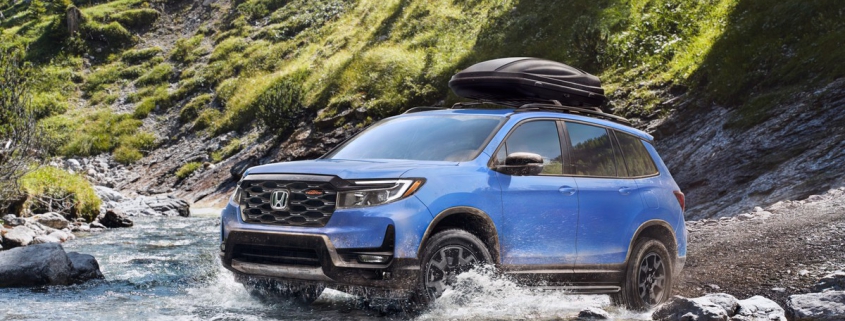Honda Passport est un modèle de véhicule utilitaire sport (SUV) qui fait son retour sur le marché en 2015.
If you have the desire for a trip back in time, but about 10 years ago, there are different ways to do it. First, you can try to build a machine like the Delorean from Back to the Future. And good luck with that.
You can also get behind the wheel of a Honda Passport, the intermediate SUV from Honda that has everything it takes to be the best vehicle in its category… for the year 2015.
The Passport is a fairly large SUV, designed to comfortably accommodate five passengers. And it’s true: it’s very comfortable. As is tradition with Honda, the cabin is well insulated, the driving is extremely smooth, and the cabin has just enough usable space to comfortably fit four or even five adults.
Where things get tricky is everywhere else. Both on the dashboard and under the hood, in fact. And let’s also add, in front of the salesperson’s desk, given the price asked for this vehicle that doesn’t offer anything new or competitive compared to what is sold elsewhere.
First, let’s remember that the Passport costs, depending on the chosen version, between $50,000 and $58,000. That’s a lot. We’re not talking about an Audi or BMW SUV here. And for this price, you get an SUV powered by a 3.5-liter V6 engine that is almost the same as what Honda was selling at the turn of the millennium.
Well, we’re exaggerating, but on paper, it’s practically that. The naturally aspirated V6 (which is not a bad thing, by the way) produces a power of 280 horsepower and a maximum torque of 262 pound-feet. All of this is transmitted to the driving wheels by a 9-speed automatic transmission, which is very modern. It is combined with an electronic variable torque management system to provide the driver with all-wheel drive, which is ultimately the main attraction of the Passport.
After all of this, you might think that the Passport at least has the merit of being powerful and performance-oriented enough to compete with a Hyundai Santa Fe or even a Subaru Outback… but it’s not that simple. The V6 used by Honda lacks muscle. It feels constantly out of breath.
It doesn’t have, in very technical terms, the “oomph” that we would like to see it deploy when we need a sudden acceleration on the highway. If we had to say, we would say that the combination of the V6 and 9-speed transmission might not be optimal.
Especially since at the end of the day, we end up with a consumption of almost 12 liters per 100 kilometers, which is no better than what a comparable midsize SUV was doing in 2015, after all…
Inside as well, we missed out on a few years of upgrades. The multimedia system is a simplified version of a system that Honda and Acura have been using for more than a generation now. The screen is small, the interface is dated, and CarPlay and Android Auto interfaces require a USB connection.
In short, we’re not in 2024 here, but in another era. An era that doesn’t evoke any nostalgia, in fact, which doesn’t help Honda’s cause…



